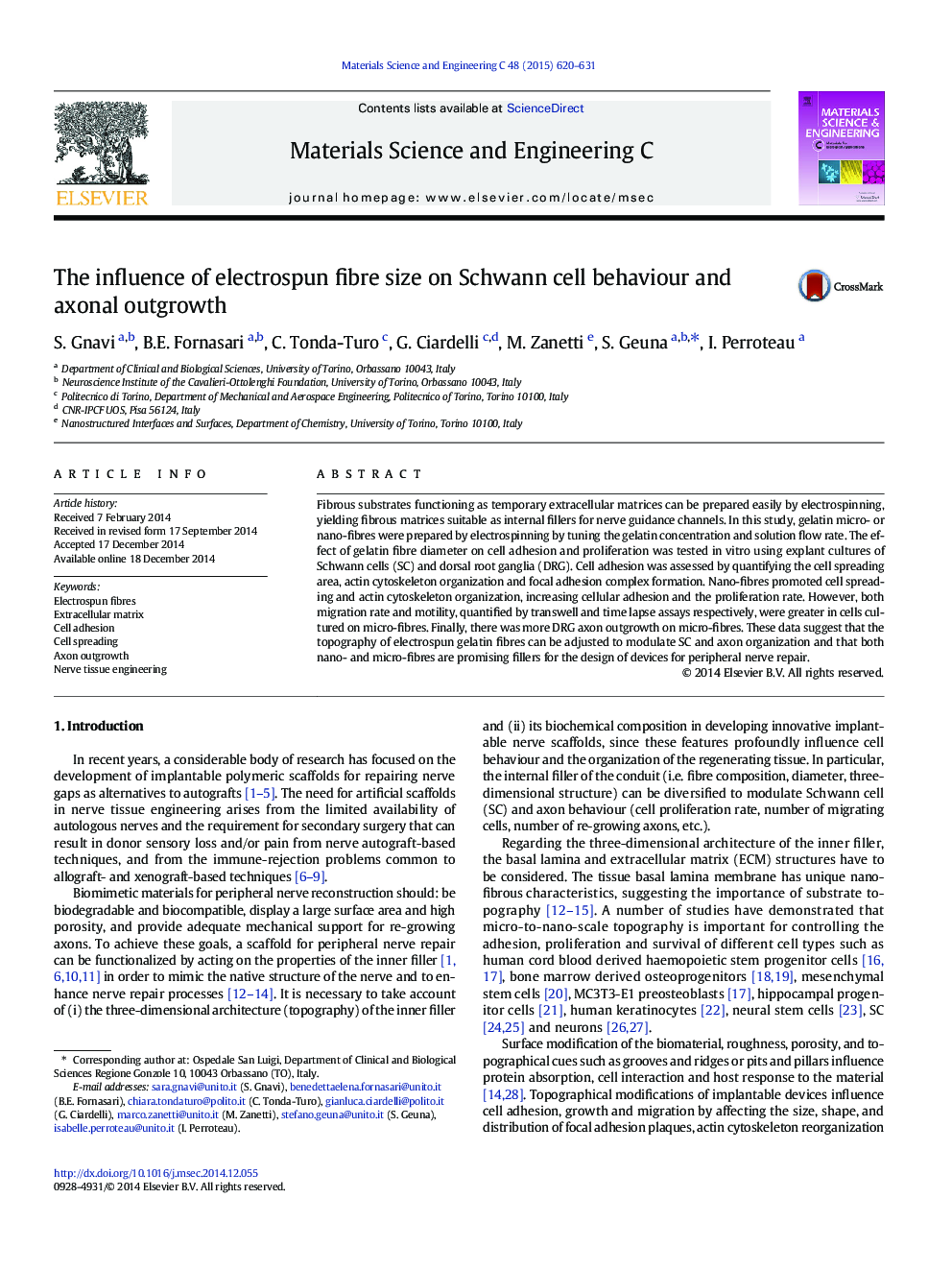| Article ID | Journal | Published Year | Pages | File Type |
|---|---|---|---|---|
| 1428493 | Materials Science and Engineering: C | 2015 | 12 Pages |
•Electrospinning used to produce gelatin nano- and micro-fibre matrices.•Nano-fibre matrices promote Schwann cell organization and increase proliferation rate.•Micro-fibre matrices promote Schwann cell migration.•Micro-fibre matrices promote axonal outgrowth.
Fibrous substrates functioning as temporary extracellular matrices can be prepared easily by electrospinning, yielding fibrous matrices suitable as internal fillers for nerve guidance channels. In this study, gelatin micro- or nano-fibres were prepared by electrospinning by tuning the gelatin concentration and solution flow rate. The effect of gelatin fibre diameter on cell adhesion and proliferation was tested in vitro using explant cultures of Schwann cells (SC) and dorsal root ganglia (DRG). Cell adhesion was assessed by quantifying the cell spreading area, actin cytoskeleton organization and focal adhesion complex formation. Nano-fibres promoted cell spreading and actin cytoskeleton organization, increasing cellular adhesion and the proliferation rate. However, both migration rate and motility, quantified by transwell and time lapse assays respectively, were greater in cells cultured on micro-fibres. Finally, there was more DRG axon outgrowth on micro-fibres. These data suggest that the topography of electrospun gelatin fibres can be adjusted to modulate SC and axon organization and that both nano- and micro-fibres are promising fillers for the design of devices for peripheral nerve repair.
Graphical abstractFigure optionsDownload full-size imageDownload as PowerPoint slide
